12 Types of Digging Tools to Aid in Your Garden Tasks
Author: Chris Miller | Editor: Omar Alonso
Review & Research: Jen Worst & Chris Miller
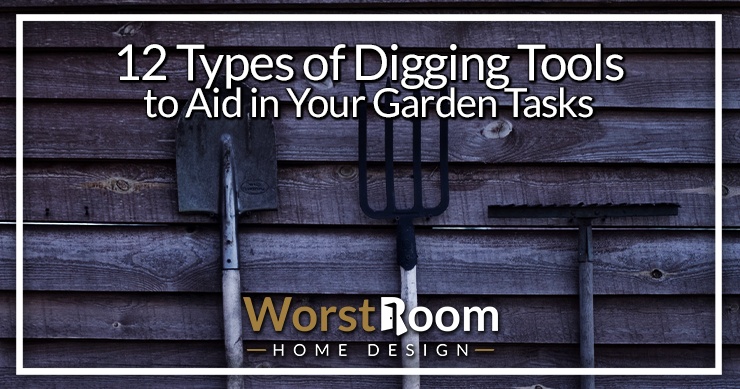
While a basic shovel will definitely help you dig a hole, don’t limit yourself to a shovel alone when there's all types of digging tools available.
Whether you’re gardening or going on an archaeological expedition in your garden or prepping the ground for construction, the right tools will go a long way in helping your digging and getting the job done faster while also reducing the amount of effort and fatigue that can occur.
12 Types of Digging Tools
Here’s a list of some basic and advanced types of tools for digging holes to add to your toolbox. No matter what kind of work you're needing to do in your garden, big or small, there will be an efficient tool to help you dig.
Shovels
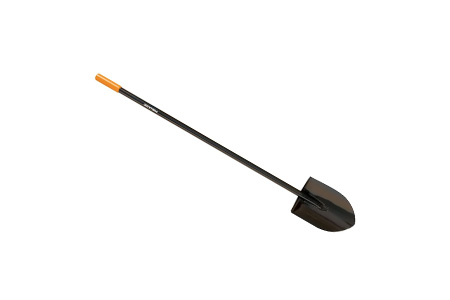
When you think of digging tool names, the shovel undoubtedly comes to mind first. The humble shovel probably already features in most people’s arsenal of tools, but it’s worth mentioning again simply because of how basic yet supremely functional this tool is.
Shovels are great for all kinds of digging, whether you’re excavating for construction or simply want to plant your new saplings. These tools have a flat blade with a pointed end that lets them effortlessly push deep into the ground and remove any mud.
There are many types of shovels, ranging from the traditional kind to electric and folding shovels, all that feature different shovel parts but all of the main ones are always present.
Folding shovels are extremely convenient since they’re also portable. Compact when folded over and as long as any normal shovel when fully extended, folding shovels are great to have around for emergencies or when you need to travel light but still carry tools (for example, while camping).
Some folding shovels come with multiple attachments, such as screwdrivers, saw blades, and even compasses, making them multifunctional.
In the age of electric everything, there are also electric shovels! These are battery-powered tools, but how effective they are will depend on the brand and the tool’s features.
Digging Knives
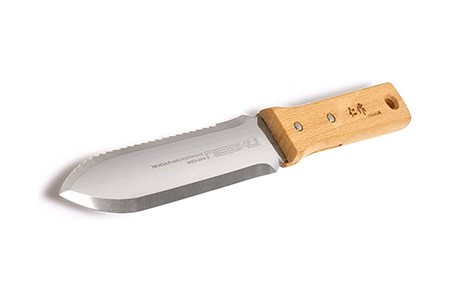
A digging knife? Is that even possible? While it’s completely natural to be incredulous about the capabilities of a knife when it comes to digging, digging knives mean business.
Whether your project is large or small, these tools can be quite efficient, easily slicing through packed soil and excavating holes. Some folks even find it easier and more productive to use digging knives than trowels.
Digging knives are also quite useful in prising out any rocks that may be buried or embedded in the dirt. This is especially handy while gardening. However, digging knives are just as handy on outdoor trips. Features such as depth scales and carrying cases only add to the convenience afforded by the tool.
Also, at the end of the day, digging knives are still knives, which means that you can also cut things with these knives when necessary. So please be careful, even when using them as tools to dig holes.
Gardening Forks
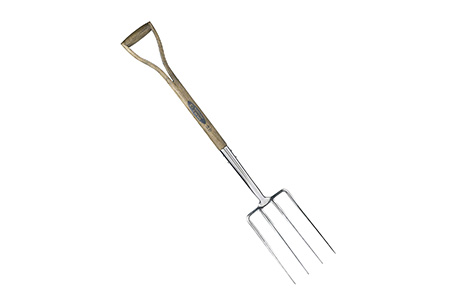
When you’re dealing with hard or rocky soil in your garden, especially heavy clay, you’ll need the right types of digging tools to break up the soil, create sufficient air pockets in it (for nutrients and airflow), and prep it for any plants you’re going to grow in this soil. Garden forks are quite handy when it comes to aerating your garden.
Gardening forks allow proper soil enrichment, conditioning, and aeration. Achieving this is as simple as pushing your fork across the soil surface and turning it over, like turning compost.
Depending on your needs and convenience, you can purchase either short-handled, small forks, or bigger forks with longer handles. The latter lets you work standing up, while the former is meant for work while kneeling or sitting.
Many folks tend to confuse gardening forks with pitchforks, but the two are quite different. The former has strong square tines, unlike the latter’s round, slender ones. Additionally, where gardening forks are built to move mud and dirt, pitchforks are engineered for relatively delicate tasks such as moving straw.
Spades
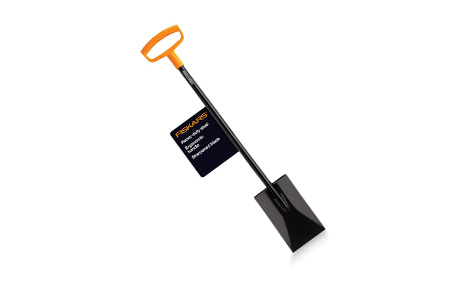
Like shovels, spades also feature in the majority of the country’s toolkits! Spades are excellent tools to have around when you want to dig deep, narrow holes, such as for planting bulbs, without having to sit down or kneel, thanks to the long handle.
Sometimes, spades and shovels are mistaken as being the same tool. However, there are quite a few differences between the two, such as the shape of the blade tip and the body.
Spades have square blades that are better at slicing through hard soil (with a little help from the feet applying pressure on the back edge) and turning it over, unlike shovels which have rounded bodies and blades designed for cutting through softer soil and transferring soil.
Whether you want to use a spade or shovel can come down to a matter of preference, since the basic functionality is the same. If you want to work easily while standing, a spade is a better idea than a shovel. Take a look at the concept of a graft, too, which is barely any different from a spade.
Trowels
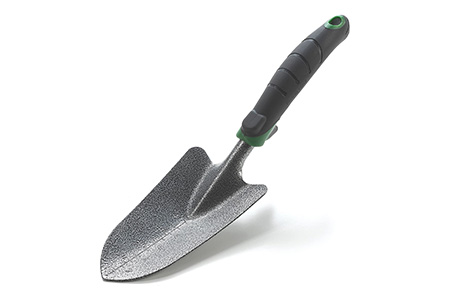
Much like a mini shovel or a large palette knife, these tools are great for small tasks, such as digging and planting small plants, making furrows, planting bulbs, and de-weeding your garden. They’re also excellent in situations where you want to dig around one plant without disturbing its neighbors.
About as big as the average human hand, trowels have pointed tips on their steel blades that let them easily cut through the soil. Some trowels have curved edges on the blade so that it’s easy to scoop up and remove any dirt or soil.
For an extremely efficient trowel, you can consider one with a depth scale engraved, so that you know how deep you’re digging. Even without this, you have a great tool that can help you with planting and maintaining your garden. Since trowels are hand tools, you’ll need to get down and dirty to properly use them.
Hoes
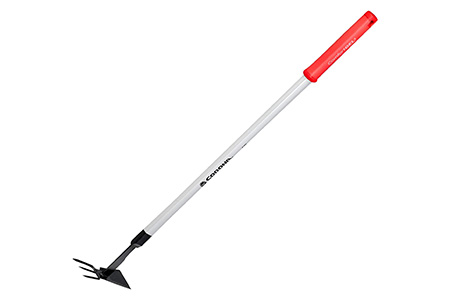
Familiar to those who are gardening enthusiasts, all types of garden hoes are usually associated with weed removal but are quite the multipurpose tool, useful for a range of activities from harvesting crops to tilling your garden. Hoes are, in fact, types of digging tools, too.
Hoes come with many differently shaped and sized blades that define their functionality. For example, hoes featuring heart-shaped blades with pointed ends are great for digging out furrows, whereas those with triangular blades are good for breaking up soil or digging soil out of tight spots.
On the other hand, square-bladed hoes are good for de-weeding and loosening compact soil. Regardless of the shape and size of the blade, all hoes have perpendicular blades.
Augers
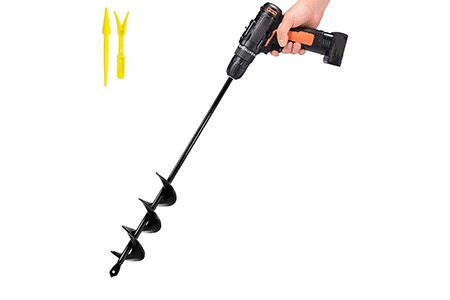
The auger’s life purpose is one thing and one thing only—easily drilling holes. With the aid of the right types of drills, these tools not only create holes but then pull the material out of the hole. I'm sure you can already see how this is helpful for digging holes in the ground.
These spiral-shaped implements easily drill into the soil and are great for digging deep. There are many types of augers, with fence post augers and planting augers probably being the most commonly used in households.
All augers can be attached to drills, so you can easily handle the auger and perform tasks such as digging a hole or widening the area with the auger via the drill.
Planting augers as hole digging tools can be used standing upright, with hardy steel parts that are quite durable. Fence post augers are ideal for digging large, wide holes, such as those necessary for installing fence posts (hence, the name).
Post Hole Digger
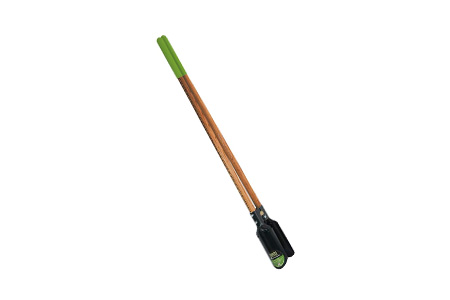
I must tell you before I say anything else that I think these tools are horribly ineffective. You'll work very hard to scoop out very little soil. What you do manage to grab will fall back in the hole as you attempt to lift it out. It works better with denser soil like clay. Good luck if you encounter rocks.
The idea for these is that you create the exact size and depth hole you desire with minimal damage to the surrounding grass (as an example). I'd rather use an auger first, and then pull the material out of the hole using a post hole digger, if I needed a very particularly shaped hole.
It's basically like two spoons facing downward, connected by a swivel. Look at the image above and imagine they're spoons and you're trying to scoop sugar out of a bowl. What I can say is that they're durable and will last you a long time. But as tools to dig up dirt, they're just not remotely the most efficient way of getting a hole dug.
Picks & Mattocks
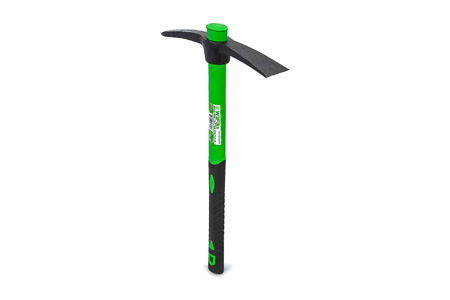
Also known as a pickax, picks and mattocks are two sides of a single dual-purpose tool. One side of the tool’s head features a pick, which is great for breaking through and breaking up hard soil and rocks, and the other side features a mattock for easily scooping up or excavating the broken up soil and rocks.
Additionally, thanks to the overall curved shape of the head, you can also use this tool as a lever, handy when you need to prise out rocks or soil.
Mattocks may not always have a pick for company; some may feature adzes and are called cutter mattocks. Mattocks, regardless of what’s accompanying them, are great types of digging tools that are also used for removing or cutting weeds, planting saplings and seeds, and digging into the soil easily.
However, pick and mattocks can be a little hard to use, since you need to swing really well in order to generate sufficient force for the tool to do its job; just the pick or mattock alone may not be able to accomplish much. A shock-absorbent mattock goes a long way in reducing fatigue and can help.
Tillers
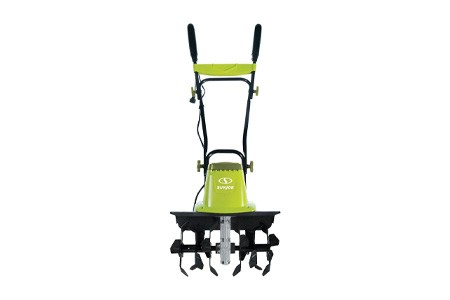
If you want to bring in the heavyweight for your soil aeration needs, consider investing in a power tiller. Like the pitchfork, these tools aerate the soil surface by turning over the dirt, except that they’re more powerful, getting the job done much faster than your normal pitchfork.
Electric tillers are a super popular power-tiller option, simple to use and highly efficient. Some people don’t like the restriction of a cord, though. You can also find gas-powered tillers, but these are quite polluting and noisy.
Of course, these tools to dig soil are going to be more expensive than a pitchfork, so consider your needs (and budget) carefully before you decide to invest in one. If you're preparing a large garden, this is not something you should go without. Year after year they'll save you a lot of time and physical labor.
Digging Bar
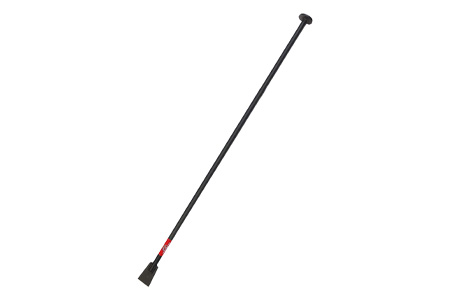
A digging bar is nothing more than a long, skinny bar made of a very sturdy metal, usually iron. One side will have a sharp point and the other will either have a flattened point (to help you chop through roots or dislodge more soil at once) or may even have a surface to hit with a rubber mallet.
They're used more often in very rocky soil, or in piles of rubble or gravel material, to help loosen everything up after it's settled into a more "locked" orientation. They're also great for breaking apart masonry, like bricks that have mortar between them, so you can re-use the bricks later.
Other Useful Digging Tools
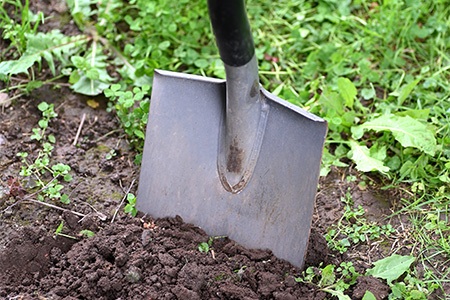
There's more to digging a hole than deciding which tool to use to create the hole itself. You'll want to consider wearing gloves if you're prone to developing blisters, and safety goggles and hearing protection if you're using powered tools or striking with force. You'll definitely want to have some types of buckets on hand or a wheelbarrow to collect and move the soil afterwards.
Some people will keep a water hose nearby on a garden hose stand so they can spray the soil and let the water seep in, which can help loosen it up for easier digging. You also need to first consult a professional to make sure there's no gas, water, or electrical lines where you plan on digging, especially if the depth is extreme.
Types of Digging Tools for Any Garden Task
Yes, there are many people who are doing just fine with only a shovel in their lives, but if you want to make yours easier, adding the above tools to your arsenal is highly recommended.
The functionality of all these types of digging tools will greatly reduce the amount of time and effort invested in performing even simple tasks like planting, furrowing, digging, and transferring soil and are well worth the money you spend on them.



